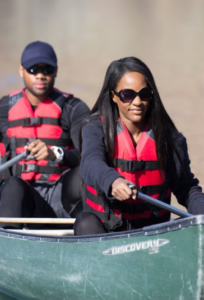
During the offseason, the sunshine may feel warm but the water is life-threateningly cold. If you’re hardy enough to venture out, thoroughly check out your vessel’s seaworthiness, test all equipment, put on your life jacket, and follow these tips:
- Prepare and share Write down, email, or text a summary of your plans for the day to your marina, a family member, or a friend. Specify your boat’s name, type, length, color, and the location of its towing vehicle, if applicable, and include a photo of your boat as well. Be sure to share the time you plan on returning. You
 may also use the U.S. Coast Guard mobile app to file a float plan (the app also features an emergency assistance button): http://www.uscg.mil/mobile/.
may also use the U.S. Coast Guard mobile app to file a float plan (the app also features an emergency assistance button): http://www.uscg.mil/mobile/. - Carry a waterproof bag Include an emergency locator beacon (EPIRB), a portable marine VHF radio, cell phone, whistle, pocket flares, and a signal mirror. Keep the bag on you in case you end up overboard.
- Avoid carbon monoxide (CO) poisoning Covers are more likely to stay on when the temperatures are chilly and cold engines produce more CO than warm — a very bad and potentially deadly combination. Wear extra layers of clothing, leave the covers off, maintain fresh air circulation, and run exhaust blowers extensively.
- Never boat while impaired Alcohol isn’t the only no-no. If you’ve got a cold or infection, check with your doctor or pharmacist about the side effects of any prescription and/or over-the-counter medications — if you shouldn’t drive, you shouldn’t boat.
![]()
Cold water safety video




